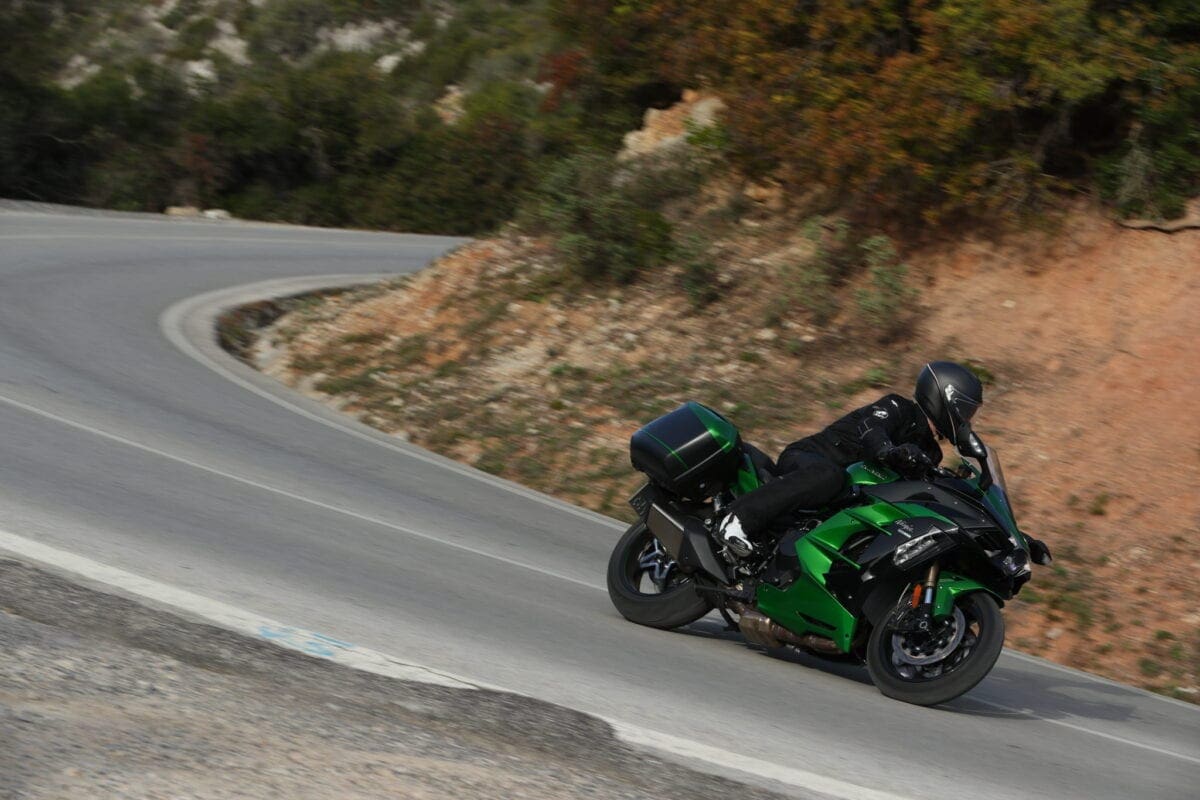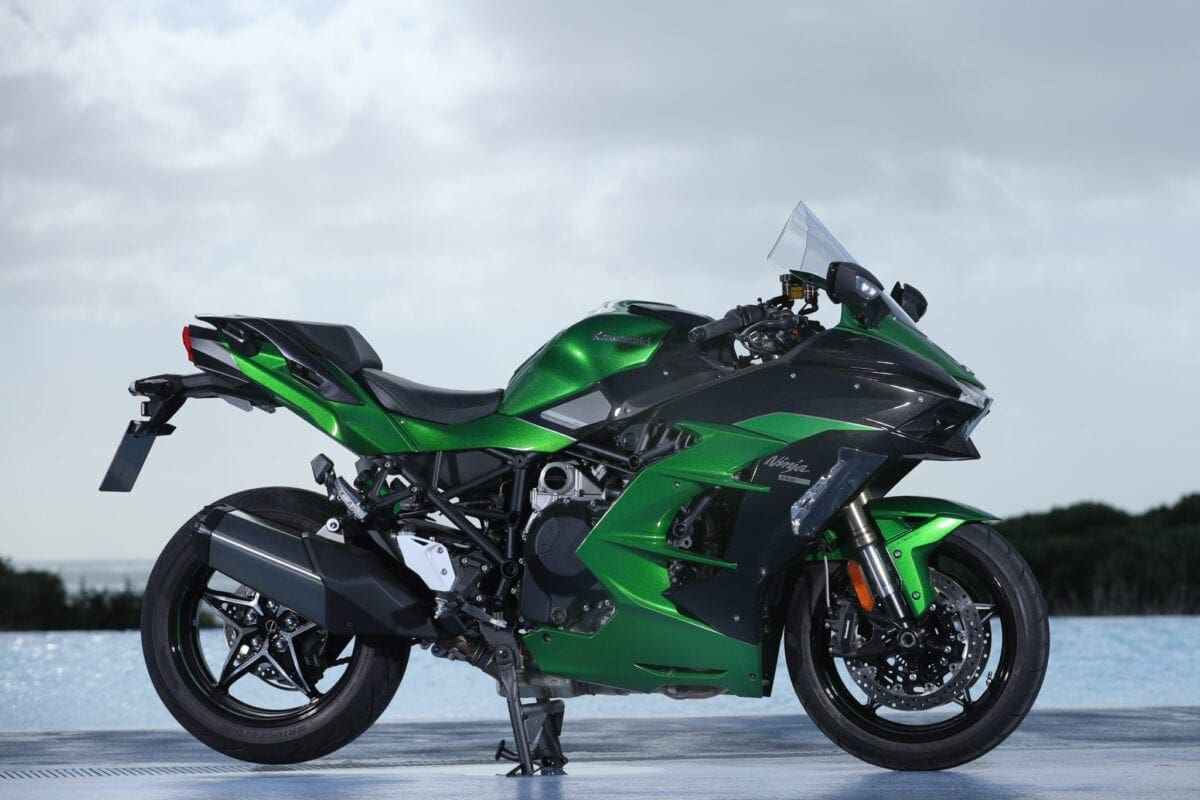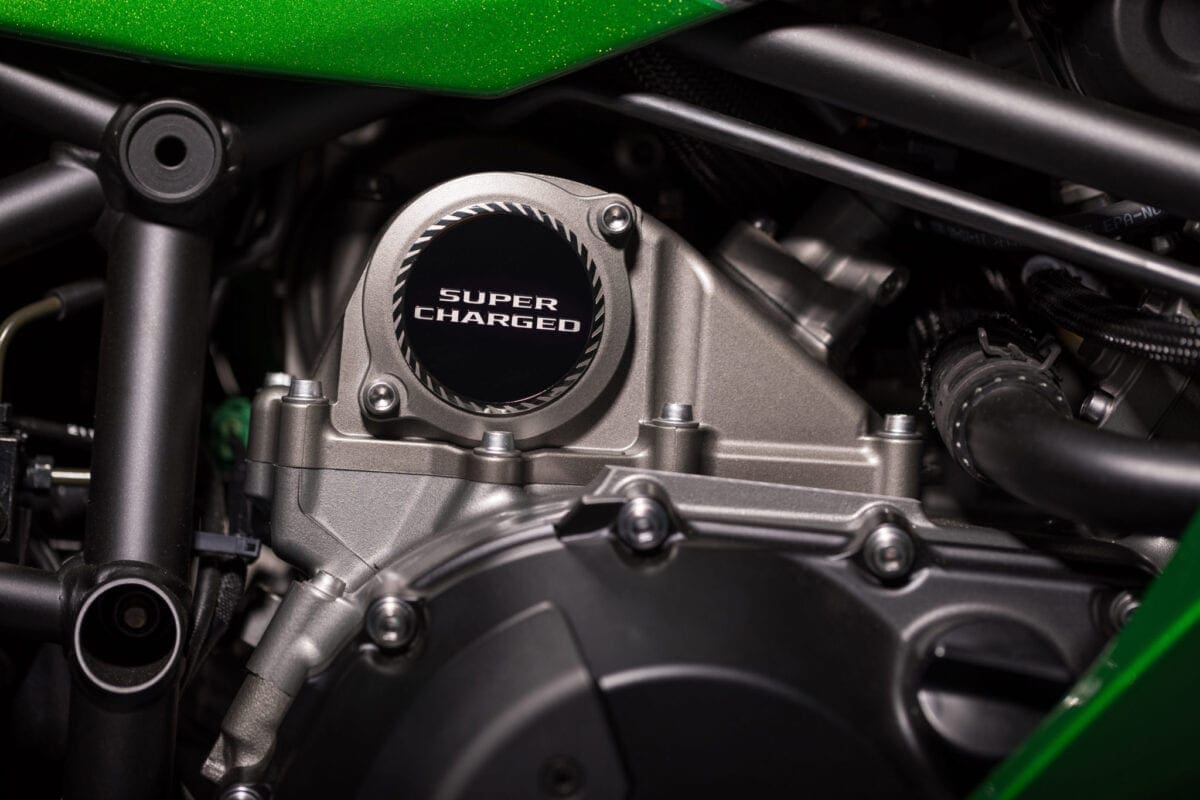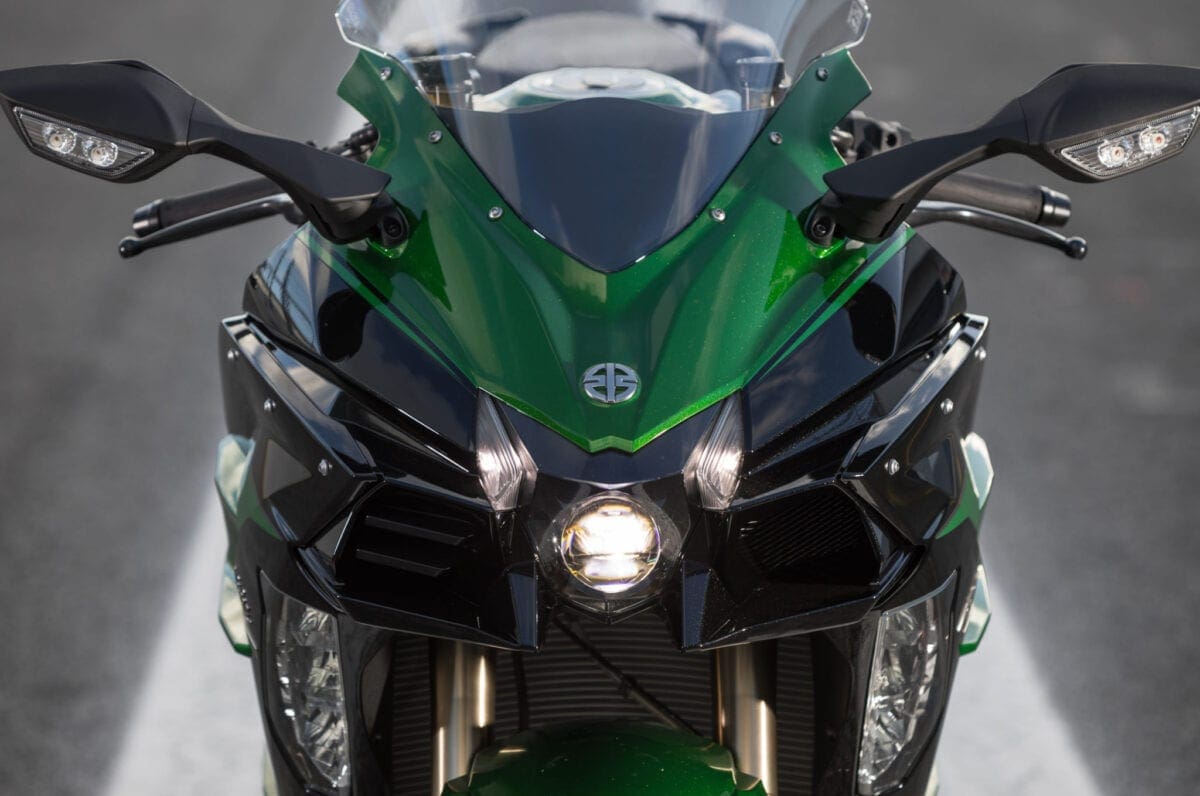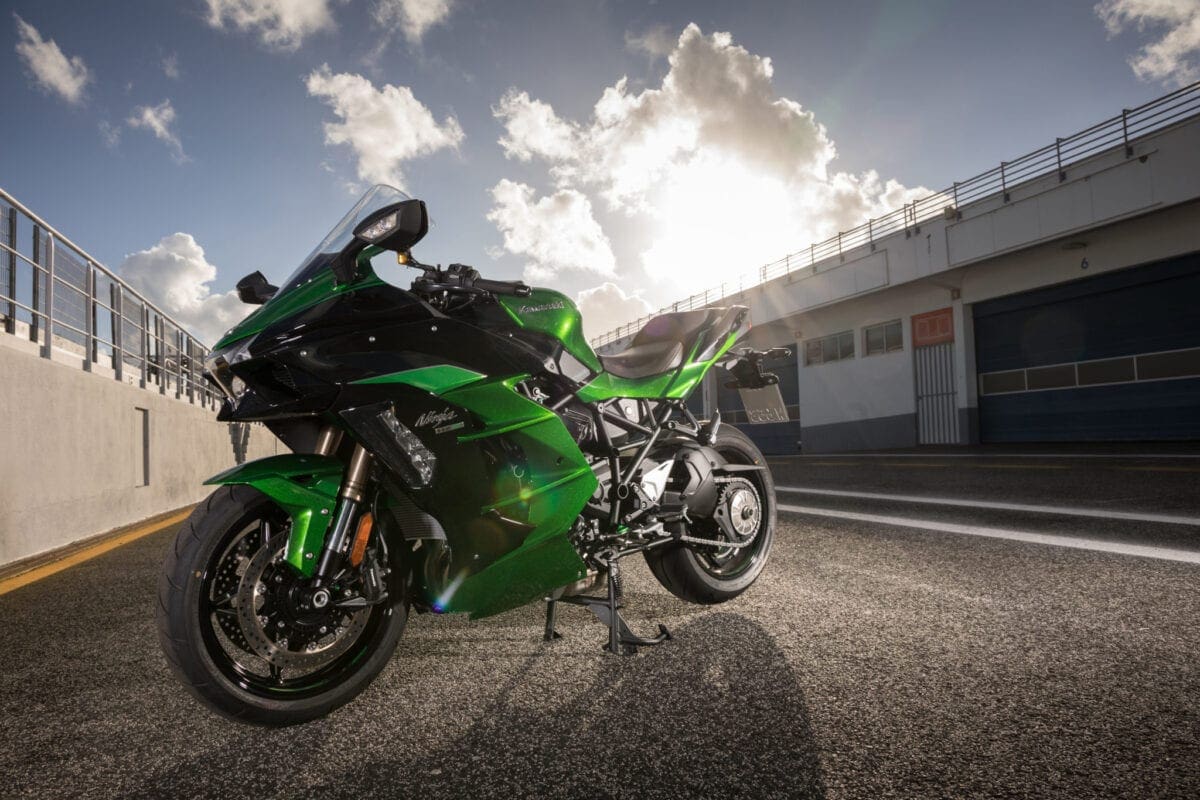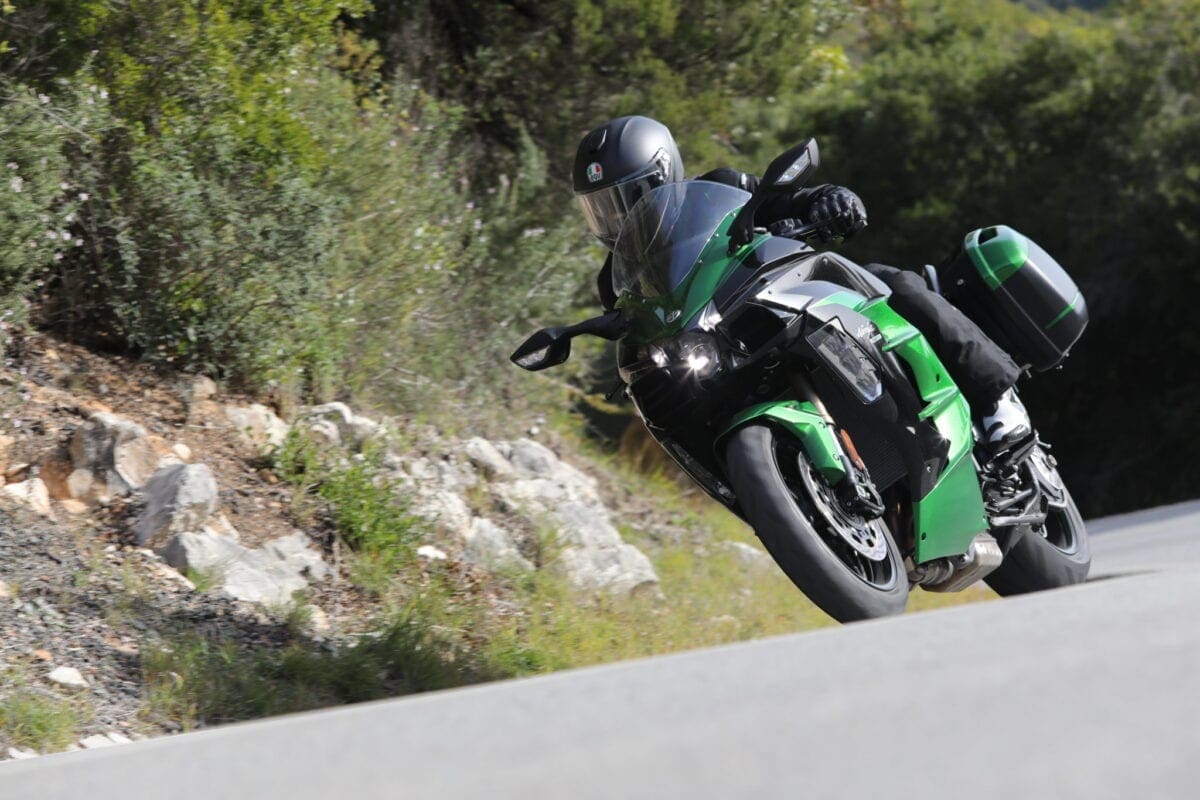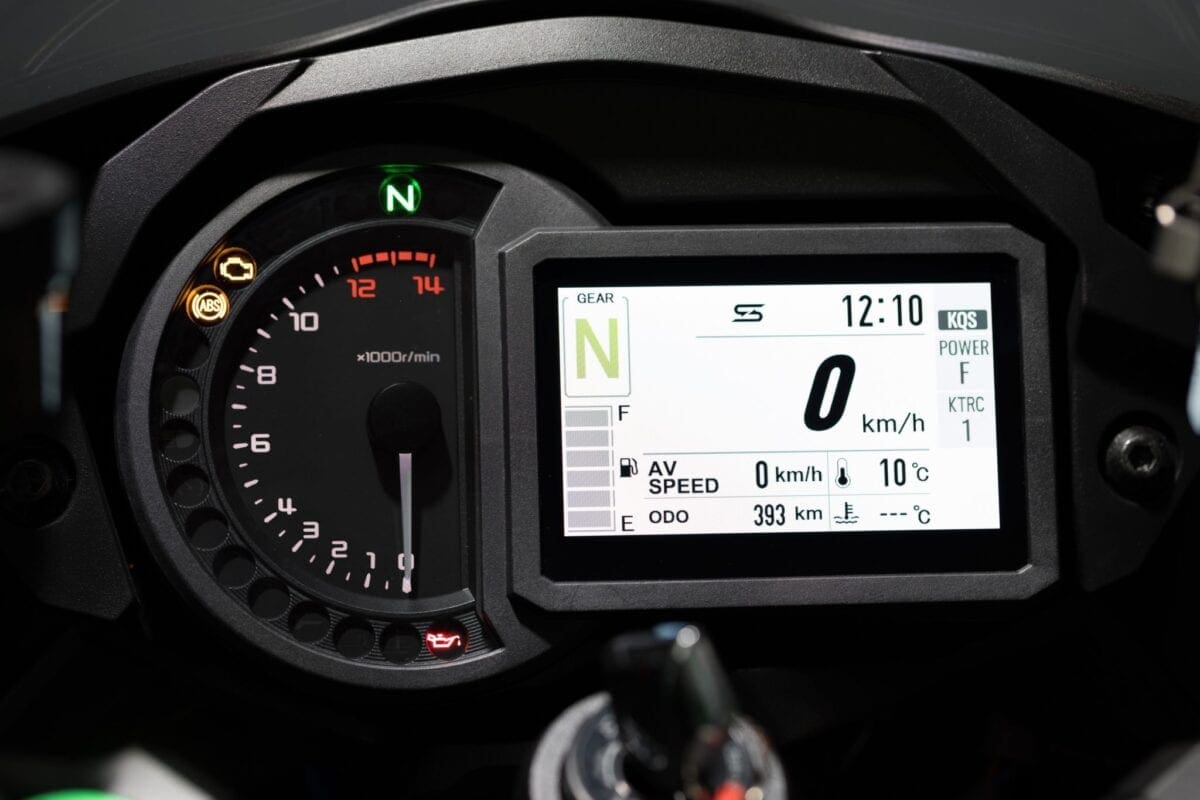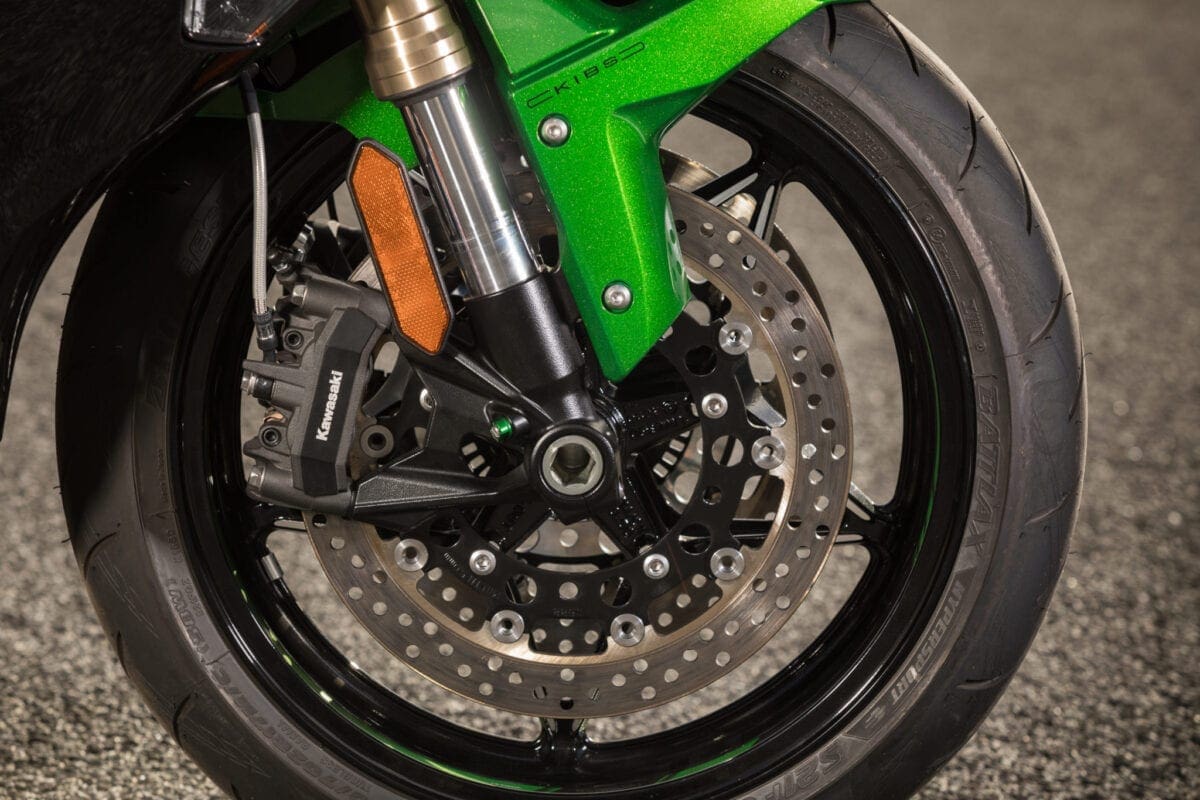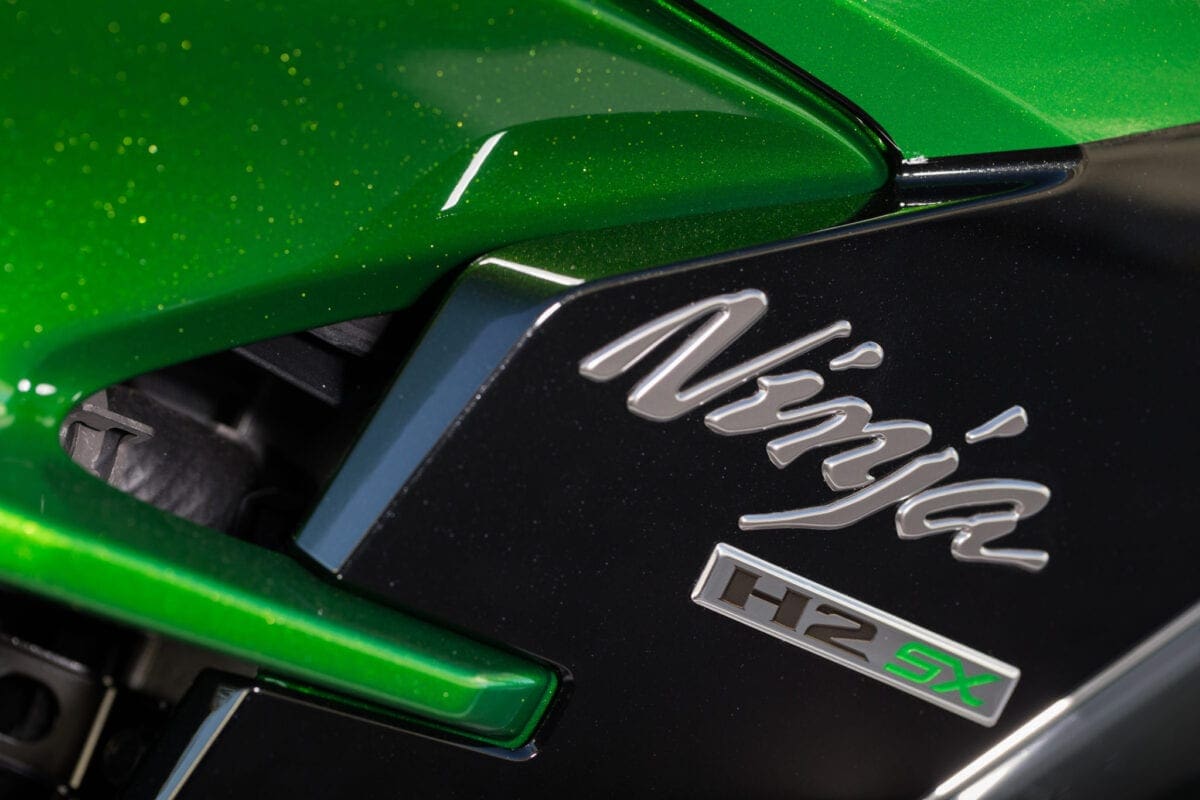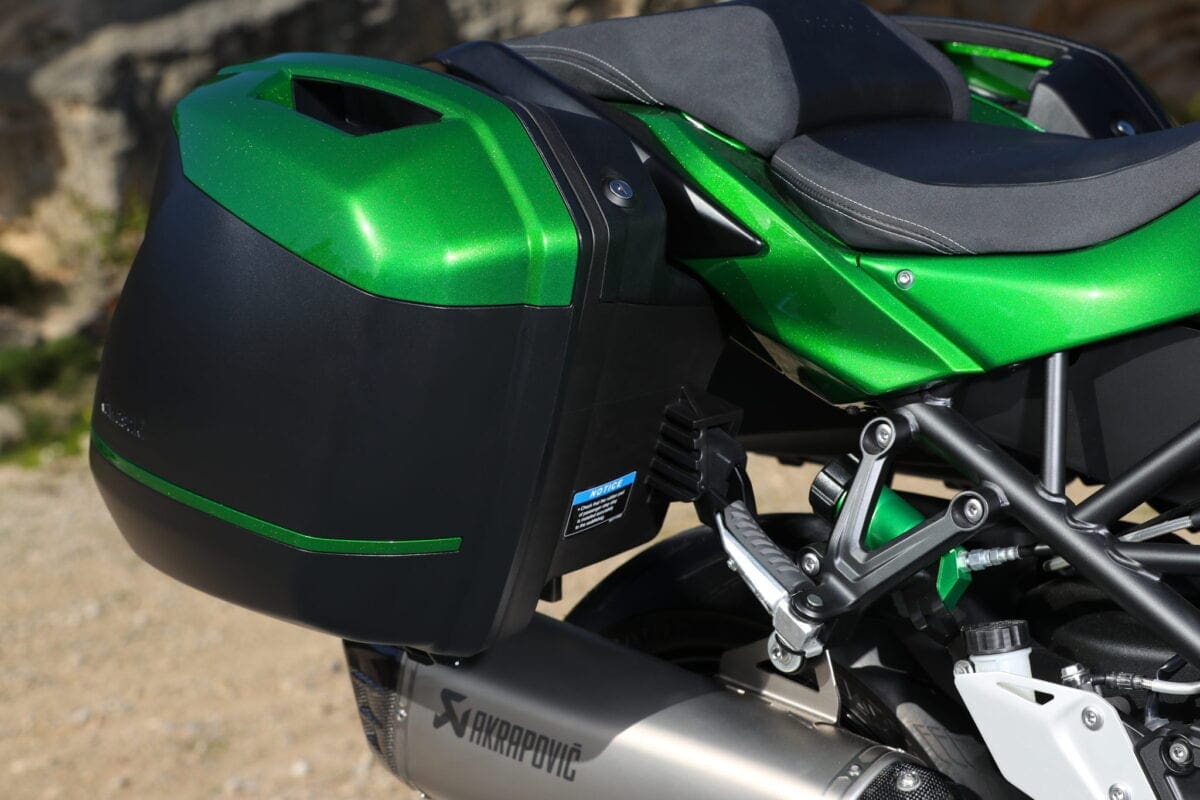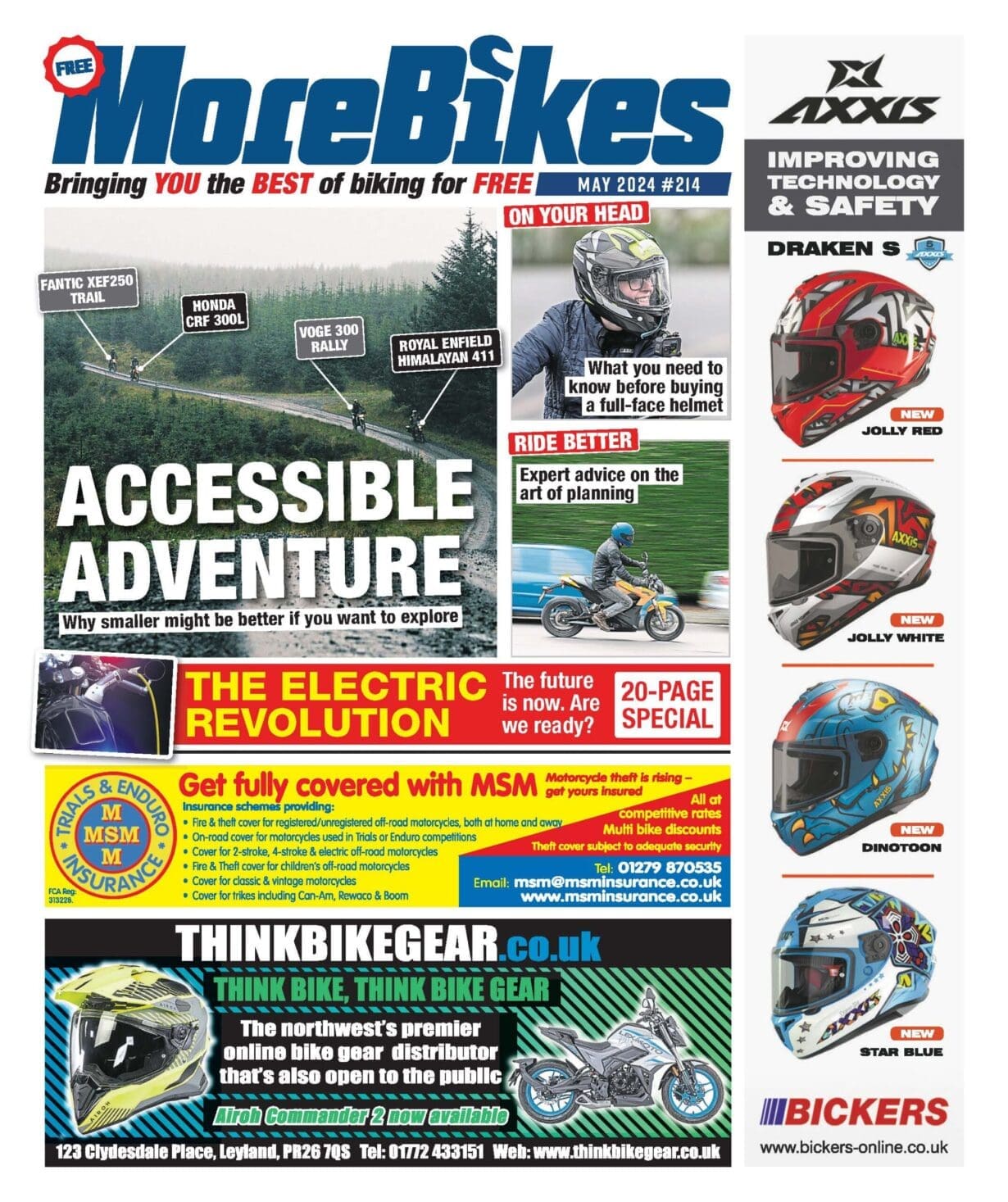Kawasaki has put sport firmly back into sport touring with the 197bhp supercharged Ninja H2 SX. But the real shocker is how comfortable and easily manageable all that power is.
Before we talk about the Ninja H2 SX, there’s one thing I need you to do: forget about the H2. The new bike may share its name and a lot of tech and components with Kawasaki’s mind-bending 300bhp (in track spec) supercharged H2 hyperbike, but it’s a completely different proposal. With the H2 SX Kawasaki is introducing what it calls balanced supercharging, which means emphasis on both performance and fuel efficiency, making the bike less aggressive and thirsty, while still retaining a high level of performance.
WORDS: Mikko Nieminen, Editor, Motorcycle Sport & Leisure
PHOTGRAPHY: James Wright, Double Red
Despite the departure from the attitude of the H2, the new machine does look a lot like its fire-breathing cousin, with the little ‘fangs’ at the front below the headlight and the aggressive lines sweeping from front to back. Although, the Ninja H2 SX has a more substantial fairing and a steeper screen angle than the H2 to give you shelter from the wind. There’s also a fairly plush pillion seat, and the exhaust has been shrunk, but if you had to pick the bike from Kawasaki’s line-up that most looks like the H2 SX, it would be the H2.
Enjoy everything More Bikes by reading the monthly newspaper, Read FREE Online.
The new bike comes in two versions, the base model, Ninja H2 SX, and the more exclusive Ninja H2 SX SE, which adds a TFT dash, launch control, quick shifter, cornering lights, steel braided brake hoses, premium colour scheme and polished wheels to the list of equipment. These aren’t available as accessories for the base model, but other bits that come as standard on the SE like the centre stand, 12V socket, larger screen, heated grips, tank pad and wheel rim tape can be added to the SX at extra cost. The panniers, frame sliders, knee pads, smoked screen and helmet lock are accessories on both bikes.
Although the SE gets all the best toys, the base model isn’t exactly deprived of features either – especially when it comes to electronics. Kawasaki has treated both bikes to its cornering management package, which consists of corner sensitive traction control and ABS, engine braking control and ride modes. Keeping the whole electric orchestra playing in time is a five-axis Bosch IMU (Inertial Measurement Unit), which keeps a beady eye on what’s going on with the engine and chassis at any given point.
Road test
Even after the technical presentation designed to reassure us that this was a new generation of supercharging – as much about fuel efficiency as outright performance – I still approached the bike with some trepidation on our first day of testing. We were riding the top-spec Ninja H2 SX SEs with the accessory panniers fitted, and we had a route of about 200 miles planned to get to grips with the machine.
My nerves were settled as we set off and the H2 SX SE seemed to handle very much like any other powerful four-cylinder litre-bike – this supercharging business wasn’t so scary after all. It was easy to negotiate our way through rush hour traffic in Lisbon, with the low to mid-range power building steadily and the bike running very smoothly even on low revs. There’s a very slight jump in power delivery when you first roll on the throttle, and a bit more noticeable drop in it as you close the throttle, but it’s easy to control with a steady hand. Other than that, the power delivery in town was perfect. Every now and again you hear the chirping of the supercharger as it gives the engine a helping hand, but you don’t feel any surge in power and if the system was entirely silent, you’d easily forget it was there at all.
As we left the city behind, the Ninja H2 SX SE really got a chance to impress on the faster roads, and it wasn’t long before I had a big smile on my face. With 197bhp (or 207bhp with Ram Air) available at 11,000 revs, the 998cc liquid-cooled inline four-cylinder engine isn’t short of power. And what’s more, the power is evenly spread across the rev range, and even though shifting gears is easy with the quickshifter, you don’t often need to – just roll on, roll off. If you really wanted to, you could just short-shift up to third gear as you set off and then stay there all day – with all that power and torque (101lb-ft @ 9,500rpm), you can easily be lazy on this bike.
Given that this is a high-performance touring bike, I was expecting the riding experience to be more sport and less tour, but the H2 SX SE turned out to be surprisingly comfortable. The riding position is slightly more upright than a ZZR1400, but definitely still on the sporty side, and every now and again I had to remind myself not to lean on the bars too much. Leg space isn’t huge with the pegs fairly high, but the overall position is comfortable and I didn’t even feel the need to stretch my legs during the long day of riding, as I often do. The seat is comfy too, in a firm kind of way, although I found that I kept gradually sliding to the front of it, having to readjust my position every now and again.
The Ninja H2 SX SE doesn’t only look sporty, it handles sharply too. It’s very easy and light to steer into corners, and once leant over, it tracks the line around a corner smoothly. The fully adjustable suspension handles all but the biggest bumps with ease, and helps the bike glide around corners.
Rolling back to our hotel at the end of day one it was time to see how balanced this supercharging was – did it help the Ninja H2 SX SE to achieve the fuel efficiency required from a real-world tourer? The figure on my dash was 45mpg, and the other riders in our group all clocked figures in the mid-to-low forties. That’s not bad given that our day included plenty of stop-start riding for photographs and a decent pace throughout the day. And it also seems to qualify Kawasaki’s claim that fuel consumption is similar to that of the Z1000SX and the Versys 1000. It’s not the best mpg figure from a tourer, but then a lot of them don’t have 200 supercharged horses pulling them – for a bike this sporty it’s not too bad.
Bird or plane?
So what is the Ninja H2 SX SE exactly? A sporty touring bike? A sportbike with touring ability? Or a tourer with superpowers? The simple answer is all of those – it really depends on how you want to ride it. There is plenty of power and torque available for sporty riding, but that is more than matched by the refined nature and easy manner of the low-to-mid range performance.
The level of equipment on this high-spec model is impressive, and there is a definite feel of exclusiveness about it – after all, how many people do you know with supercharged bikes? But at the same time this is a machine that is just as happy as a humble daily commuter as it is crossing continents at warp speed.
There’s a high likelihood that we’ll see more supercharged bikes in the future as the emissions regulations get more draconian and supercharging provides a way to retain performance without the same emissions levels as a traditional combustion engine. At the moment though, the Ninja H2 SX SE is a pioneer of bringing supercharging into everyday biking, and the first impressions are good. If customers embrace the new technology, this could well be the setup that brings the sport back to touring – and many other genres of biking too.
Specification – Kawasaki Ninja H2 SX SE (2018)
Price: £18,099 [Standard Ninja H2 SX: £15,099]
Engine: 998cc liquid-cooled, inline 4, DOHC, 16 valves
Power: 197bhp/147kW (207bhp/154kW with Ram Air) @ 11,000rpm
Torque: 101lb-ft (137Nm) @ 9,500rpm
Intake system: Kawasaki Supercharger
Transmission: 6-speed, chain final drive
Frame: Trellis, high-tensile steel
Suspension: (F) 43mm fully-adjustable USD forks; (R) KYB fully-adjustable, gas-charged mono-shock with piggyback reservoir and remote preload adjuster
Brakes: (F) Semi-floating 320mm discs, radial-mount, monobloc, 4-piston calipers; (R) 250mm disc, 2-piston caliper
Tyres: (F) 120/70ZR17M/C (58W); (R) 190/55ZR17M/C (75W)
Fuel capacity: 19 litres
Wheeelbase: 1,480mm
Wet weight: 260kg
Seat height: 835mm
Availability: From end of March 2018
Contact: www.kawasaki.co.uk
Advert
Enjoy everything More Bikes by reading the MoreBikes monthly newspaper. Click here to subscribe, or Read FREE Online.


